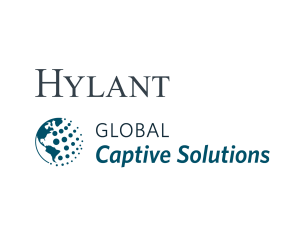Using Captive Insurance To Globally Optimize Employee Benefits

Alex Gedge , Brianne Gillespie , Hylant Global Captive Solutions | May 22, 2024

For companies that do business globally, making a generous benefits program available to employees outside the United States can provide a powerful incentive in the competition for talent.
Although citizens of most developed economies have access to government-funded health care, a global employee benefits program offered through a captive insurer can provide desirable coverage above and beyond the benefits offered by government programs. More importantly, using such a captive gives the company a manageable way to bundle most of its benefits-related risks into a single pool, allowing it to diversify that risk better.
If a company has not explored the captive approach, employee benefits may be the ideal place to start. After all, managing benefits for most companies involves a staggering number of claims and extensive churn resulting from constant employee turnover.
The use of captives isn't limited to healthcare costs either. Many non-US employers commonly offer life insurance, short-term disability, and supplemental medical coverage as a way to attract and retain top talent. A global benefits program is a practical way to extend these offerings to all workers. Providing employee benefits in this matter can also support a company's diversity, equity, and inclusion commitments. As an example, an employee in a more conservatively governed nation may not be able to receive coverage for a same-sex partner, but the employee benefits captive gives the employer a way to make such coverage possible.
Data is at the heart of the successful design and operation of an employee benefits captive. Analyzing claims data can help companies fine-tune programs and project costs more accurately. Captive consultants can purchase data from other companies or ask actuarial partners to extrapolate whatever information is readily available to provide models of expected activity within different countries.
Data generated by a captive insurance program will help companies adjust all aspects of the benefits plan. For example, it may be that employees in a particular region are unfamiliar with a particular type of program, so the actual usage falls below estimates. That may signal the need for more employee education. The company may also see a shift in specific claims as employee populations in specific areas age, leading them to add more preventive care to head off high-cost claims.
The primary advantage of using a captive insurance company in the employee benefits space is the ability to customize your benefits to every market you're in without needing to shop for a menu of coverages in each locale. That's critical because employee benefits are a bottom-up business in which satisfaction is measured locally. Using a captive may allow your company to sidestep exclusions issued by difficult regulators or provide coverages in high demand with local markets.
That said, there are locations in which companies establishing captives may need to engage expertise at the local level to comply with local regulations. A degree of underwriting may be needed in every country. Some nations may not welcome using a global provider that doesn't have a physical presence in the country or that hasn't been admitted to work there. Increased administrative costs associated with issues like these may reduce the potential profitability of the captive.
Successfully establishing and operating a true global captive program for employee benefits represents a significant long-term commitment for both the company and its executive leadership team. When working with company leaders considering a captive to address their global employee benefits needs, a skilled captive consultant will focus on education to ensure everyone understands what goes into forming a captive, what types of risks can be assumed, and how it will be structured. They should explore the company's overall benefits strategy and the specific goals for the captive. Is it to provide centralization and governance? Is it to ensure consistency of the benefits offerings? Do they hope to achieve economies of scale? It's also important to discuss their expectations of the minimum premium the captive will likely require and explore the service providers that will help the company maintain compliance with a long list of local regulations.
If the company has an existing captive for property and casualty risks, a captive consultant should investigate whether it can be used to write employee benefits coverage lines. The correct domicile and licensing must also be considered.
This kind of complexity reinforces the importance of working with captive consultants and other partners who have extensive experience and solid knowledge in the places where your company has employees and operations. The right partners can help you avoid minefields and unexpected restrictions that might upend your most optimistic objectives. They know the compliance landscape and will likely have already established relationships with regulators and other officials. They'll also help you consider alternatives when your global captive isn't well suited to a particular country or situation.
Alex Gedge , Brianne Gillespie , Hylant Global Captive Solutions | May 22, 2024

